Wildflowers, Grasses and Other Nonwoody Plants
Media
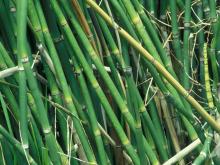
Species Types
Scientific Name
Equisetum (3 spp. in Missouri)
Description
Horsetails, or scouring rushes, are in the genus Equisetum. They’re easy to recognize with their jointed, hollow stems. Like ferns, they reproduce via spores instead of flowers and seeds.
Media

Species Types
Scientific Name
Typha spp.
Description
Missouri’s cattails are all tall wetland plants with narrow, upright leaves emerging from a thick base, and a central stalk bearing a brown, sausage-shaped flower spike.
Media
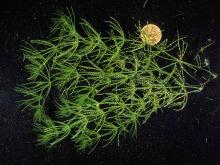
Species Types
Scientific Name
Chara spp.
Description
These aquatic algae look like regular vascular plants. Chara has a crisp, gritty texture, a musky odor, and gray-green, needlelike structures that resemble leaves.
Media
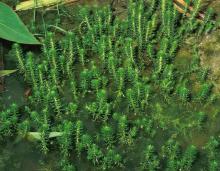
Species Types
Scientific Name
Myriophyllum spp.
Description
Water milfoils are feathery aquatic plants that grow rooted in shallow water. Their tips emerge above the waterline and bear bladelike, toothed leaves.
Media

Species Types
Scientific Name
Najas spp.
Description
Naiads are slender, narrow-leaved plants that grow completely under water and are rooted to the bottom. They never have broad, floating leaves or conspicuous flowers or seed heads.
Media

Species Types
Scientific Name
Ceratophyllum demersum
Description
Coontail, a common submerged aquatic plant, got its name from the crowded upper leaves, which make the stem tip appear bushy like the tail of a raccoon.
Media

Species Types
Scientific Name
All true grasses (species in the grass family)
Description
Missouri has 276 species in the grass family, including well-known crop plants and our native prairie grasses. Distinguishing between the species can be difficult, but it’s easy to learn some basics about the group.
Media
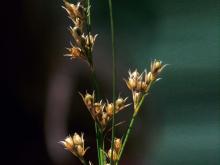
Species Types
Scientific Name
Juncus spp. and Luzula spp.
Description
Missouri has 24 species in the rush family. Distinguishing between these grasslike plants can be tricky, but it’s easy to learn some basics about the group.
Media

Species Types
Scientific Name
Carex, Schoenoplectus, Scirpus, and other genera
Description
Missouri has more than 200 species in the sedge family. Distinguishing between these grasslike plants can be difficult, but it’s easy to learn some basics about the group.
Media
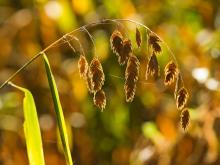
Species Types
Scientific Name
Chasmanthium latifolium
Description
River oats is a native cool-season grass that is common nearly statewide in bottomlands, stream valleys, and other moist places. The open, nodding, flattened flower and seed clusters are distinctive.
See Also
About Wildflowers, Grasses and Other Nonwoody Plants in Missouri
A very simple way of thinking about the green world is to divide the vascular plants into two groups: woody and nonwoody (or herbaceous). But this is an artificial division; many plant families include some species that are woody and some that are not. The diversity of nonwoody vascular plants is staggering! Think of all the ferns, grasses, sedges, lilies, peas, sunflowers, nightshades, milkweeds, mustards, mints, and mallows — weeds and wildflowers — and many more!





















